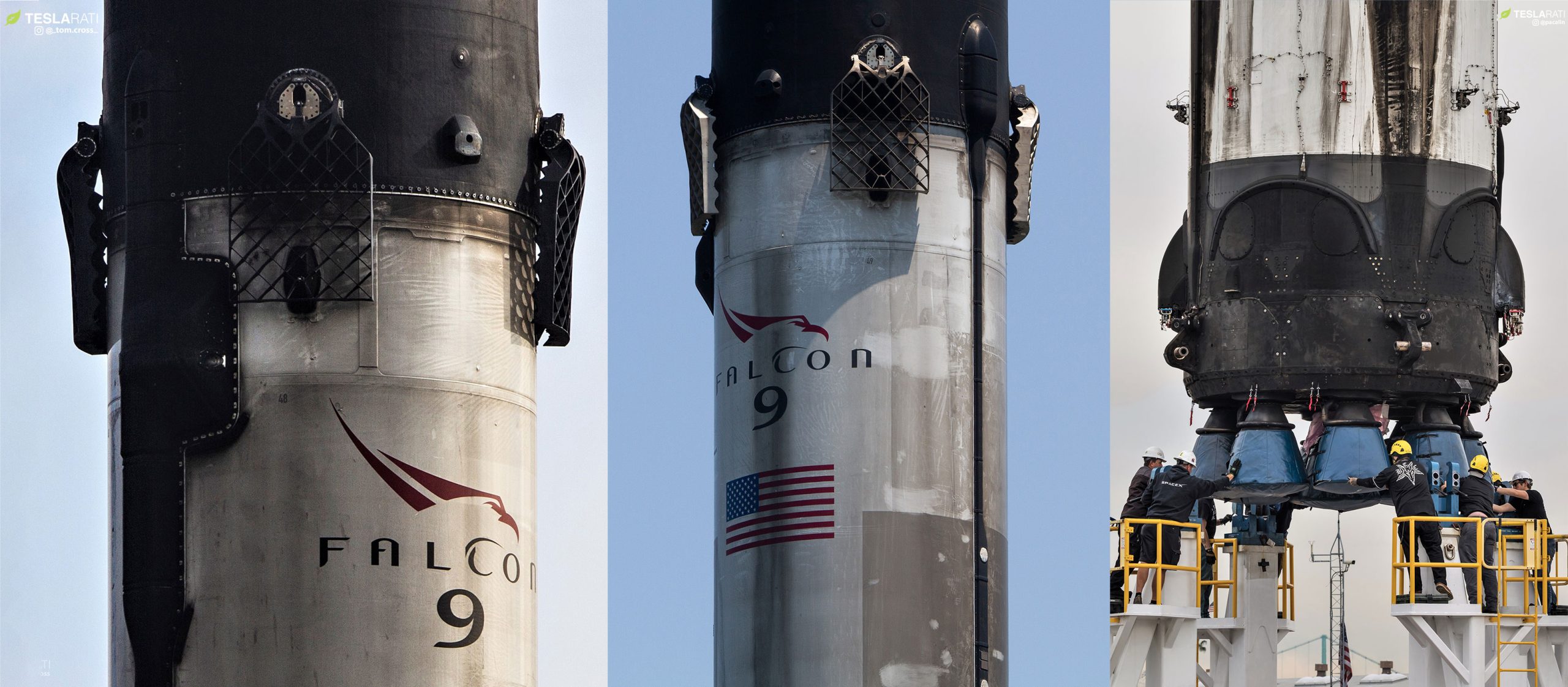
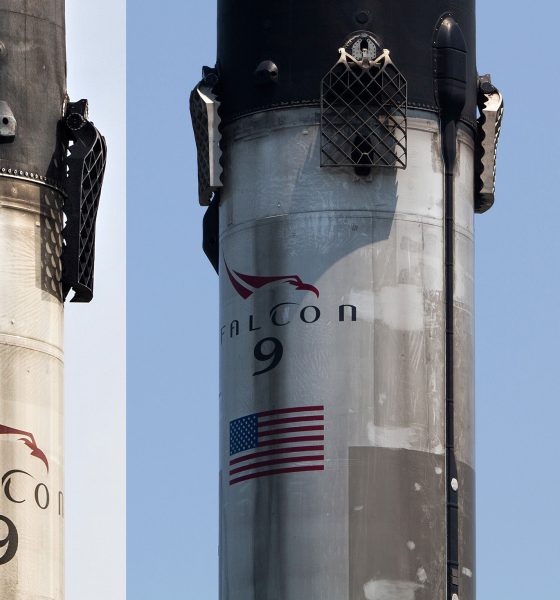
News
SpaceX sets new Falcon 9 Block 5 reusability milestones for second half of 2019
Speaking at 2019’s Asia-Pacific Satellite (APSAT) Conference, SpaceX Vice President of Commercial Sales Jonathan Hofeller – squeezed into a sea of breaking-news updates – announced that the company plans to launch the same Falcon 9 Block 5 booster for the fifth (or sixth) time by the end of 2019.
Just an add-on at the end of a number of updates focused on SpaceX’s next-generation Starship/Super Heavy rocket, the phrasing reported by SpaceNews.com technically means that there are plans for a Falcon 9 booster to launch for the sixth time in the second half of 2019. The demonstration of such an extreme level of operational reusability barely 18 months after Falcon 9 Block 5’s debut would make it clear that SpaceX’s latest Falcon upgrade has been a resounding success. In line with those positive signs, Hofeller also noted that SpaceX is already starting to transfer the fruits of those labors to its customers by permanently lowering the base price of Falcon 9 launch contracts.

Block 5 off to a spectacular start
First reported on by SpaceNews’ Caleb Henry, one of a few spaceflight journalists able to attend 2019’s Jakarta, Indonesia-based APSAT conference, details about the near-term future of Falcon 9 Block 5 reusability milestones were effectively tacked on at the end of much higher-profile breaking-news tidbits. Although wildly ambitious Starship goals led headlines (stay tuned for Teslarati’s own analysis later this week), the fact remains that ambitious development goals are inherently tenuous and likely to slip, particularly when the subject is large-scale, fully-reusable launch vehicles developed from a nearly blank slate.
What is not up for debate, however, is the fact that SpaceX’s Falcon 9 Block 5 upgrade is already flying routinely and reliably. After a successful debut in May 2018, Block 5 took over all SpaceX launches less than two months later. Since then, a total of 12 freshly-built Block 5 boosters have supported 16 Falcon 9 and 2 Falcon Heavy launches, ten – more than half – of which involved flight-proven boosters. According to official statements made recently by SpaceX executives, Block 5 boosters are expected to support an additional 12-19* launches in the second half of 2019.
*Derived by stacking “2-6 dedicated Starlink launches” and SpaceX’s 2019 target of 18-21 non–Starlink launches

Tied directly to claims that the same Falcon 9 Block 5 booster will launch for the fifth or sixth time by the end of 2019, SpaceX already has three Falcon 9 boosters that have each completed a trio of launches, as well as an additional five with either one or two launches under their belts. Pictured at the top of the article, all three thrice-flown Falcon 9 boosters – B1046, B1048, and B1049 – could arguably be selected to become the next pathfinder as SpaceX prepares to put boosters through their fourth launches and beyond.
Rumored to be assigned to Crew Dragon’s in-flight abort (IFA) test prior to a major capsule anomaly on April 20th, B1046 could be off the manifest if SpaceX is confident that said IFA test can still be performed within the next several months. It’s currently unclear if that is a viable option for SpaceX’s Crew Dragon schedule, likely to remain uncertain until the failure investigation is fully completed and any necessary design/hardware/software fixes have been implemented. B1046 completed its third launch in December 2018 (a full six months ago), followed by B1048 in February 2019 and B1049 in May 2019. Although the “unknown territory” aspect of Block 5 reuse milestones is becoming less noteworthy, SpaceX is still likely to treat B104X’s fourth launch as a pathfinder, requiring extra time to dot I’s and cross T’s. With B1046 and B1048 potentially ready to go, that milestone could come any time now.

SpaceX customers already reaping financial benefits
Meanwhile, although certain heads-in-sand competitors continue to act and claim otherwise, SpaceX has reportedly normalized earlier prices for customers flying on flight-proven milestone missions. Speaking at APSAT, SpaceX’s Jonathan Hofeller indicated that that pricing is now the company’s “normal pricing”, pushing Falcon 9’s base price as low as ~$50M according to comments CEO Elon Musk made about a year ago. Two years prior to those comments and about six months prior to SpaceX’s first-ever booster reuse, COO and President Gwynne Shotwell reported that the company was offering discounts of ~10% for customers willing to contract launches on flight-proven Falcon 9 boosters.
In other words, SpaceX has cut Falcon 9’s base launch costs by anywhere from 10-20% over the last three years, a period in which the Falcon 9 V1.2 Full Thrust rocket’s capabilities were also dramatically upgraded from Block 1 (debut: December 2015) through Block 5 (debut: May 2018). Speaking during a press conference focused on Falcon 9 Block 5’s launch debut, CEO Elon Musk estimated that SpaceX has spent more than $1 billion to develop Falcon 9 reusability, while he previously estimated Falcon Heavy’s development costs to be well north of ~$500M. Musk and other execs have previously confirmed that SpaceX means to recoup some or all of that investment, indicating that the current margins of Falcon 9 launch contracts must be extremely favorable.

SpaceX has a healthy commercial manifest and will need to support dozens to hundreds of its own dedicated Starlink launches in order to orbit an operational and profitable constellation.
Check out Teslarati’s Marketplace! We offer Tesla accessories, including for the Tesla Cybertruck and Tesla Model 3.

Elon Musk
SpaceX Starship Version 3 booster crumples in early testing
Photos of the incident’s aftermath suggest that Booster 18 will likely be retired.

SpaceX’s new Starship first-stage booster, Booster 18, suffered major damage early Friday during its first round of testing in Starbase, Texas, just one day after rolling out of the factory.
Based on videos of the incident, the lower section of the rocket booster appeared to crumple during a pressurization test. Photos of the incident’s aftermath suggest that Booster 18 will likely be retired.
Booster test failure
SpaceX began structural and propellant-system verification tests on Booster 18 Thursday night at the Massey’s Test Site, only a few miles from Starbase’s production facilities, as noted in an Ars Technica report. At 4:04 a.m. CT on Friday, a livestream from LabPadre Space captured the booster’s lower half experiencing a sudden destructive event around its liquid oxygen tank section. Post-incident images, shared on X by @StarshipGazer, showed notable deformation in the booster’s lower structure.
Neither SpaceX nor Elon Musk had commented as of Friday morning, but the vehicle’s condition suggests it is likely a complete loss. This is quite unfortunate, as Booster 18 is already part of the Starship V3 program, which includes design fixes and upgrades intended to improve reliability. While SpaceX maintains a rather rapid Starship production line in Starbase, Booster 18 was generally expected to validate the improvements implemented in the V3 program.
Tight deadlines
SpaceX needs Starship boosters and upper stages to begin demonstrating rapid reuse, tower catches, and early operational Starlink missions over the next two years. More critically, NASA’s Artemis program depends on an on-orbit refueling test in the second half of 2026, a requirement for the vehicle’s expected crewed lunar landing around 2028.
While SpaceX is known for diagnosing failures quickly and returning to testing at unmatched speed, losing the newest-generation booster at the very start of its campaign highlights the immense challenge involved in scaling Starship into a reliable, high-cadence launch system. SpaceX, however, is known for getting things done quickly, so it would not be a surprise if the company manages to figure out what happened to Booster 18 in the near future.
News
Tesla FSD (Supervised) is about to go on “widespread” release
In a comment last October, Elon Musk stated that FSD V14.2 is “for widespread use.”
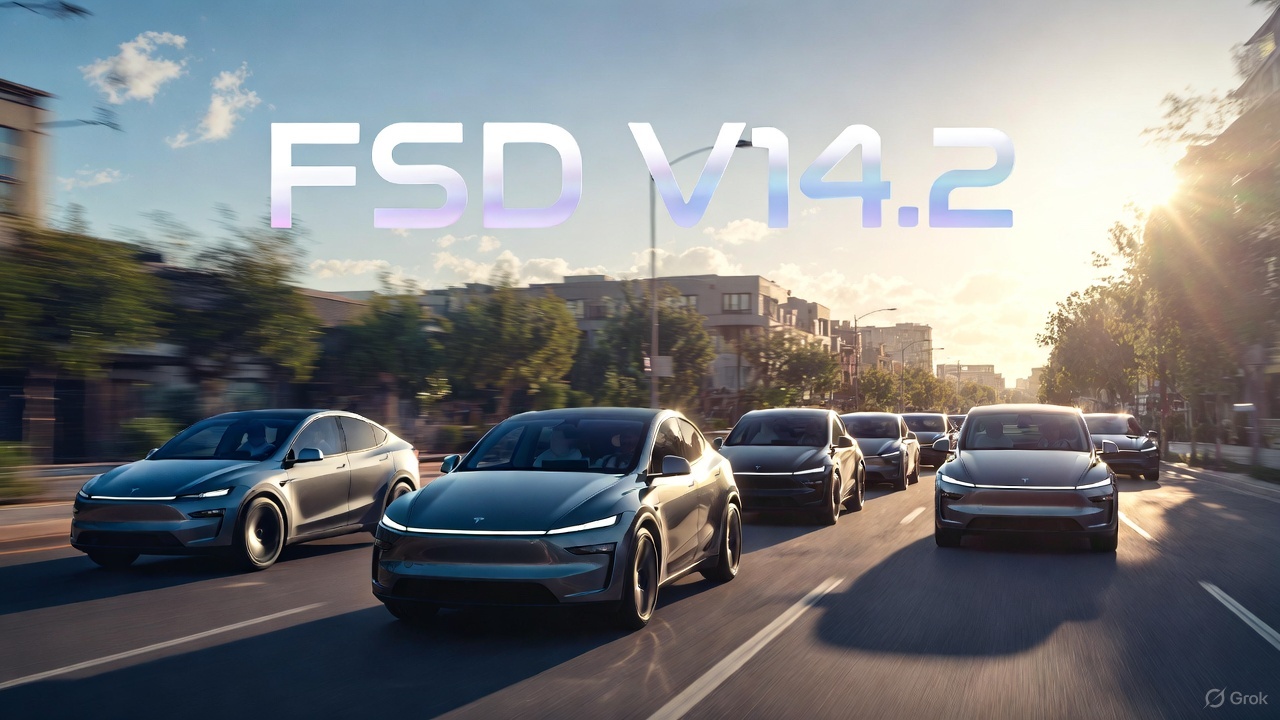
Tesla has begun rolling out Full Self-Driving (Supervised) V14.2, and with this, the wide release of the system could very well begin.
The update introduces a new high-resolution vision encoder, expanded emergency-vehicle handling, smarter routing, new parking options, and more refined driving behavior, among other improvements.
FSD V14.2 improvements
FSD (Supervised) V14.2’s release notes highlight a fully upgraded neural-network vision encoder capable of reading higher-resolution features, giving the system improved awareness of emergency vehicles, road obstacles, and even human gestures. Tesla also expanded its emergency-vehicle protocols, adding controlled pull-overs and yielding behavior for police cars, fire trucks, and ambulances, among others.
A deeper integration of navigation and routing into the vision network now allows the system to respond to blocked roads or detours in real time. The update also enhances decision-making in several complex scenarios, including unprotected turns, lane changes, vehicle cut-ins, and interactions with school buses. All in all, these improvements should help FSD (Supervised) V14.2 perform in a very smooth and comfortable manner.
Elon Musk’s predicted wide release
The significance of V14.2 grows when paired with Elon Musk’s comments from October. While responding to FSD tester AI DRIVR, who praised V14.1.2 for fixing “95% of indecisive lane changes and braking” and who noted that it was time for FSD to go on wide release, Musk stated that “14.2 for widespread use.”
FSD V14 has so far received a substantial amount of positive reviews from Tesla owners, many of whom have stated that the system now drives better than some human drivers as it is confident, cautious, and considerate at the same time. With V14.2 now rolling out, it remains to be seen if the update also makes it to the company’s wide FSD fleet, which is still populated by a large number of HW3 vehicles.
News
Tesla FSD V14.2 starts rolling out to initial batch of vehicles
It would likely only be a matter of time before FSD V14.2 videos are posted and shared on social media.
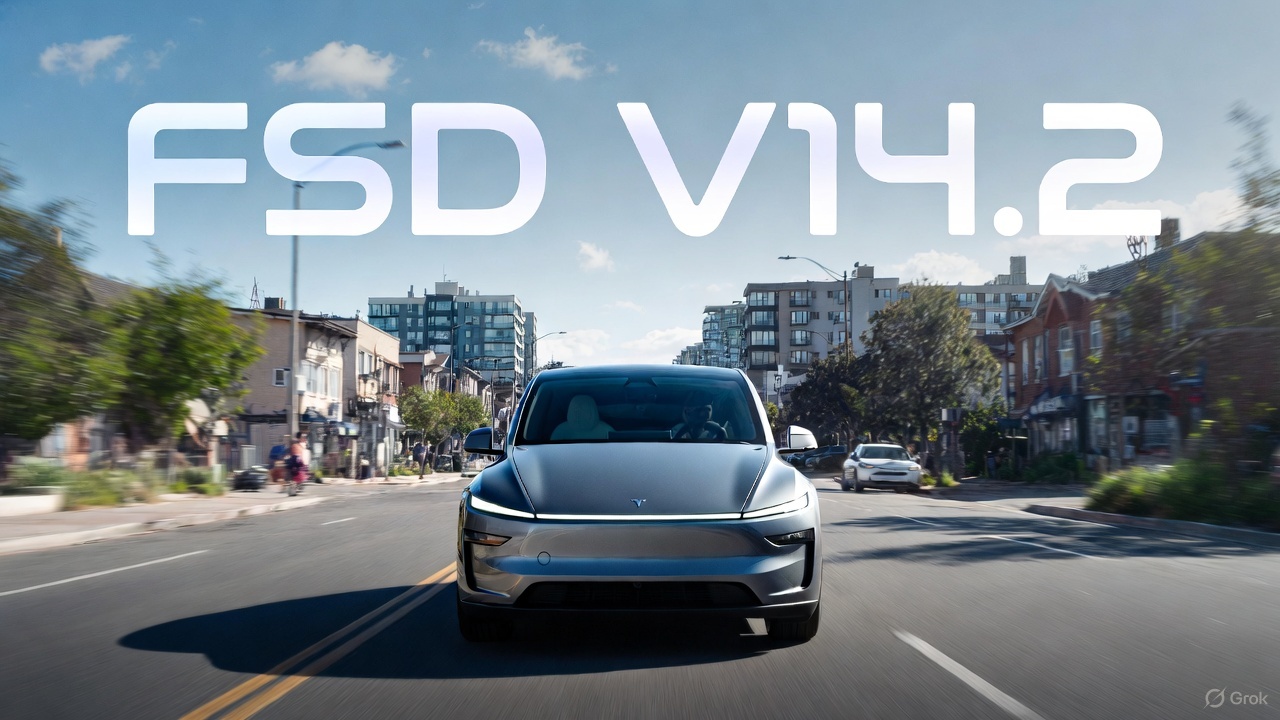
Tesla has begun pushing Full Self-Driving (Supervised) v14.2 to its initial batch of vehicles. The update was initially observed by Tesla owners and veteran FSD users on social media platform X on Friday.
So far, reports of the update have been shared by Model Y owners in California whose vehicles are equipped with the company’s AI4 hardware, though it would not be surprising if more Tesla owners across the country receive the update as well.
Based on the release notes of the update, key improvements in FSD V14.2 include a revamped neural network for better detection of emergency vehicles, obstacles, and human gestures, as well as options to select arrival spots.
It would likely only be a matter of time before FSD V14.2 videos are posted and shared on social media.
Following are the release notes of FSD (Supervised) V14.2, as shared on X by longtime FSD tester Whole Mars Catalog.
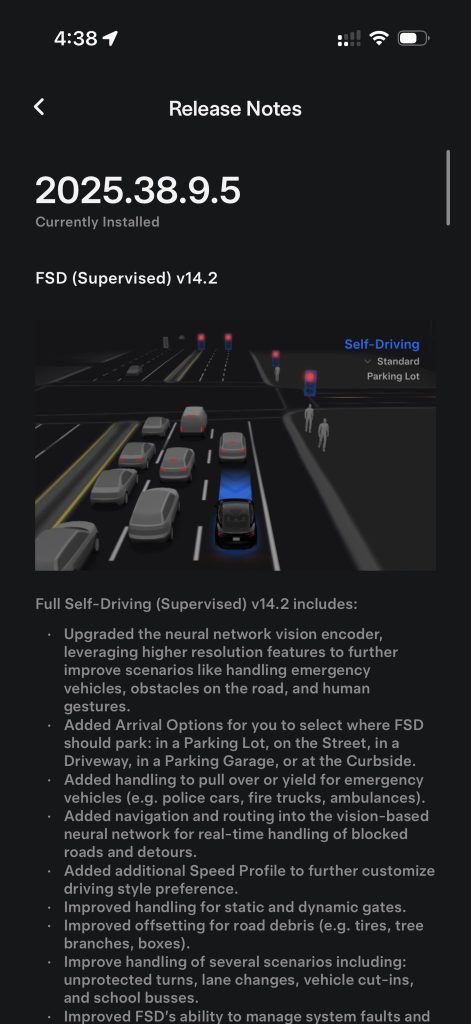
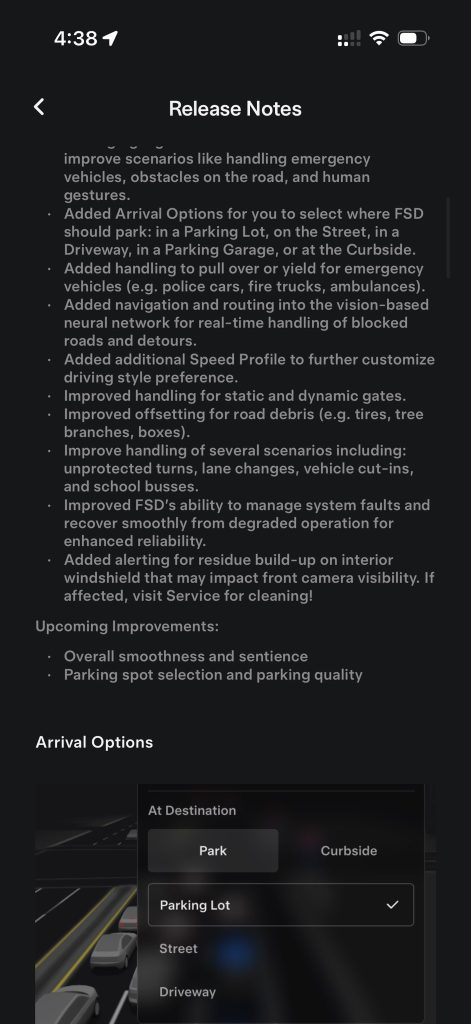
Release Notes
2025.38.9.5
Currently Installed
FSD (Supervised) v14.2
Full Self-Driving (Supervised) v14.2 includes:
- Upgraded the neural network vision encoder, leveraging higher resolution features to further improve scenarios like handling emergency vehicles, obstacles on the road, and human gestures.
- Added Arrival Options for you to select where FSD should park: in a Parking Lot, on the Street, in a Driveway, in a Parking Garage, or at the Curbside.
- Added handling to pull over or yield for emergency vehicles (e.g. police cars, fire trucks, ambulances.
- Added navigation and routing into the vision-based neural network for real-time handling of blocked roads and detours.
- Added additional Speed Profile to further customize driving style preference.
- Improved handling for static and dynamic gates.
- Improved offsetting for road debris (e.g. tires, tree branches, boxes).
- Improve handling of several scenarios including: unprotected turns, lane changes, vehicle cut-ins, and school busses.
- Improved FSD’s ability to manage system faults and improve scenarios like handling emergency vehicles, obstacles on the road, and human gestures.
- Added Arrival Options for you to select where FSD should park: in a Parking Lot, on the Street, in a Driveway, in a Parking Garage, or at the Curbside.
- Added handling to pull over or yield for emergency vehicles (e.g. police cars, fire trucks, ambulances).
- Added navigation and routing into the vision-based neural network for real-time handling of blocked roads and detours.
- Added additional Speed Profile to further customize driving style preference.
- Improved handling for static and dynamic gates.
- Improved offsetting for road debris (e.g. tires, tree branches, boxes).
- Improve handling of several scenarios, including unprotected turns, lane changes, vehicle cut-ins, and school buses.
- Improved FSD’s ability to manage system faults and recover smoothly from degraded operation for enhanced reliability.
- Added alerting for residue build-up on interior windshield that may impact front camera visibility. If affected, visit Service for cleaning!
Upcoming Improvements:
- Overall smoothness and sentience
- Parking spot selection and parking quality








